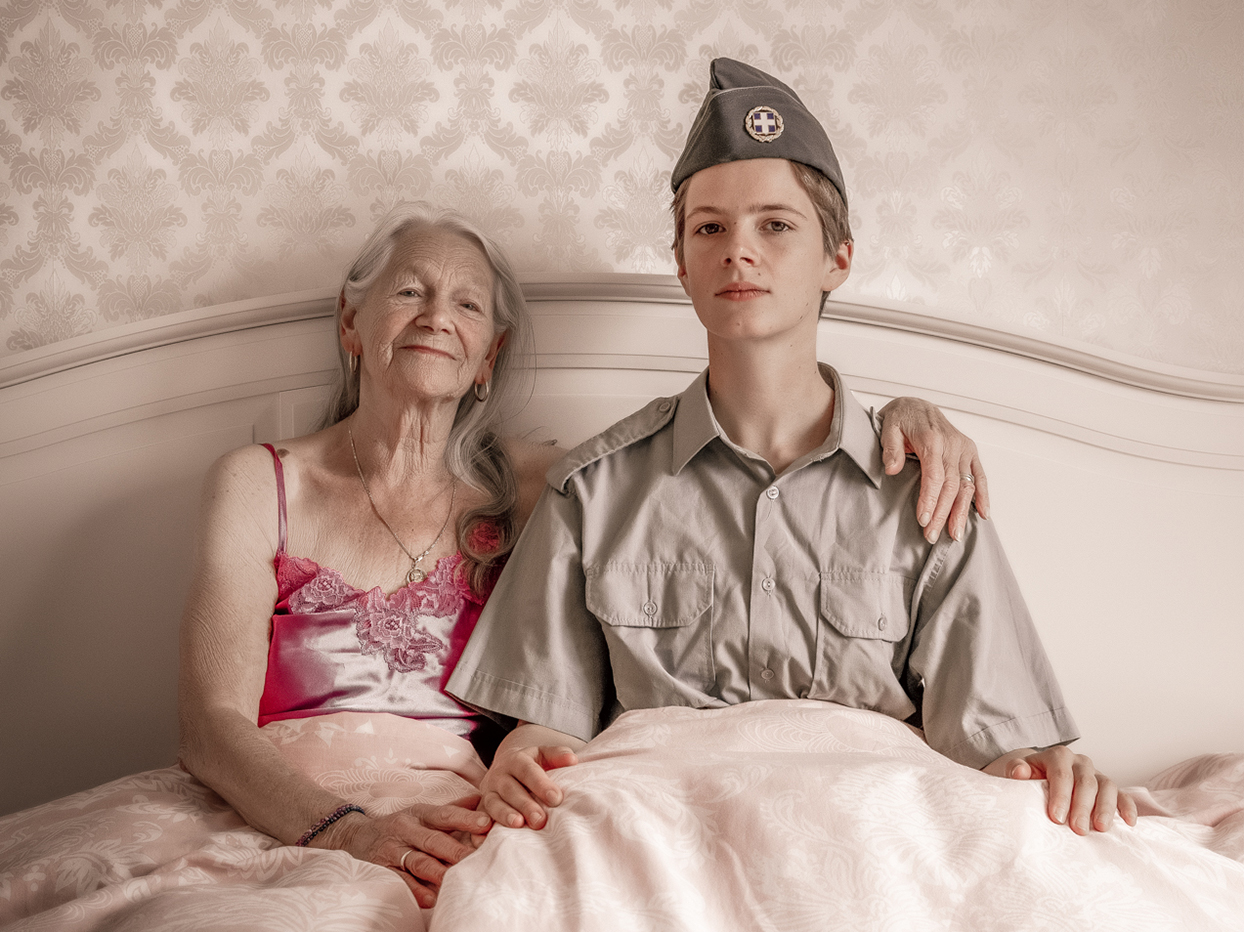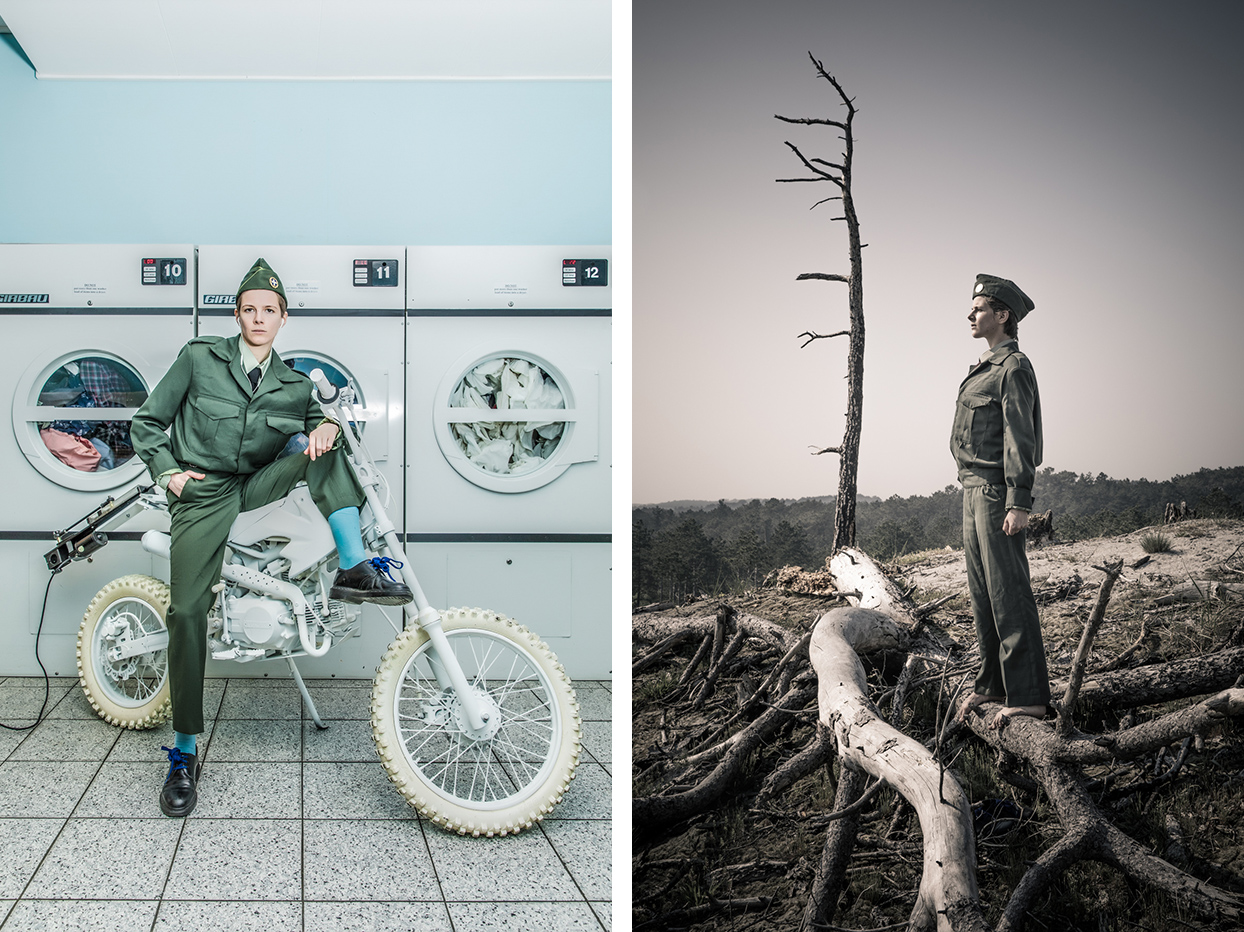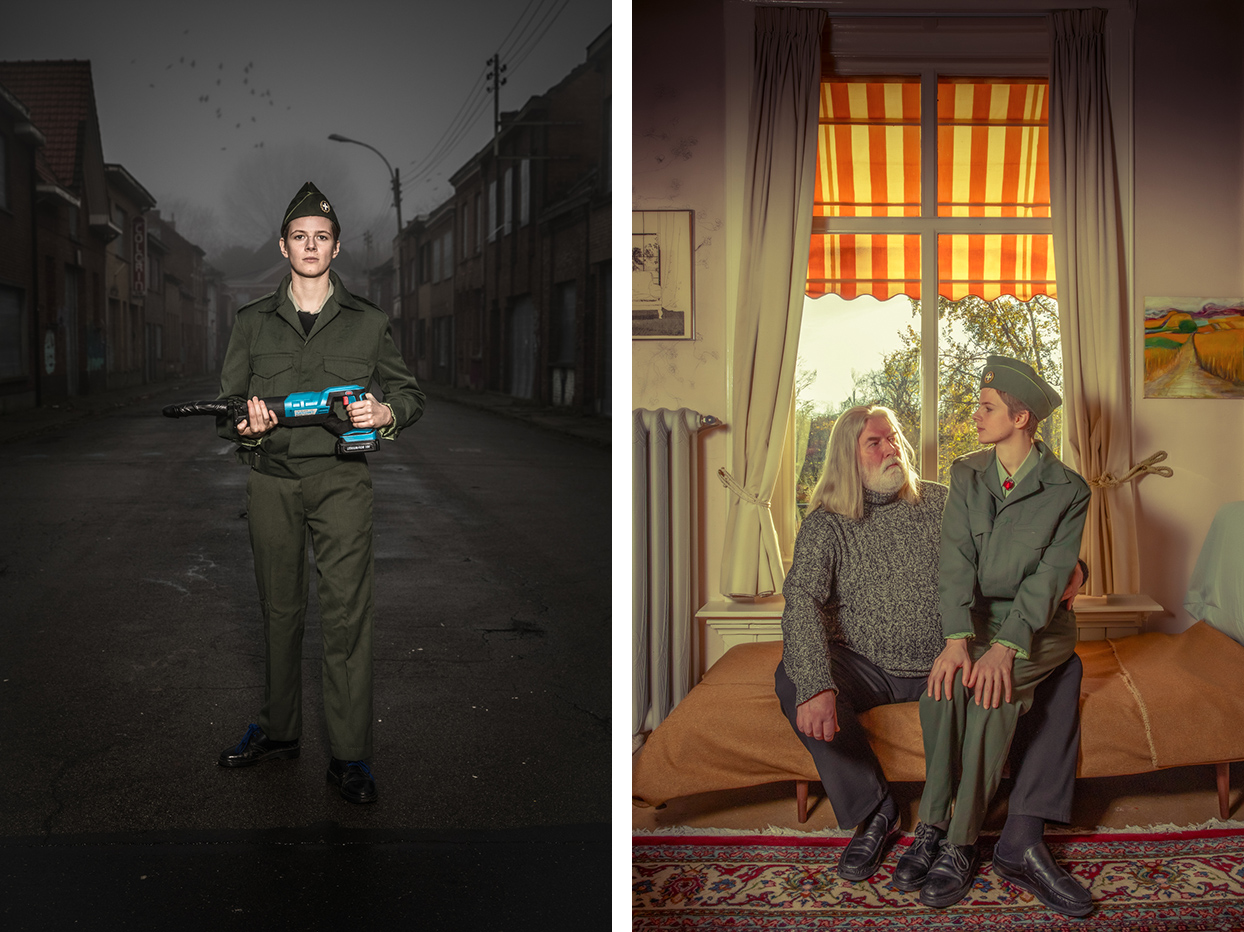The Leather-Feather Whip
Acting Up for the Virus
January 17, 2019essay,
Welcome, my name is Tantra Kassandra, I am an ancient fortune teller and contemporary sexologist.
For the Horse

Imagine a horse standing quietly with its head lowered, unresponsive to normal social and environmental stimuli, and moving away only at the release command or following the directive of the handler.
To learn helplessness or the submissive posture is considered basic training in certain Western shows and working disciplines for horses. The horse as animal perfectly embodies the deserted reflection of human desire for submission. Many of the observers of horse behaviour use their knowledge and experience to compare horses in domestic and wild settings. The slippery departure point of this assumption is the observation of the horse that we know as submissive, and that the non-submissive is wild. Is it wild when we simply abandon domestication efforts? How do horses deal with resources in their original environment and not domesticated stables in which humans place them?
For five years, Joel Berger observed wild horses of the Granite Range breed on ranches. The Spanish brought horses to the United States 400 years ago. It was exactly then that Granite Range horses became domesticated. This specific breed has been living and reproducing freely in the open ranches of the Hudson since then. Consequently, they managed to maintain their autonomy to a great extent. The breed is considered one of the clearest examples of wild horses that live communally outside a human structure.
After having observed the breed, Berger concluded that under natural any sparks of aggression or even single individual tendencies to control limited food resources were rare. Granite Range horses follow a complex and nonlinear hierarchical order. Roles of leadership and defence are exchanged between them depending on the situation in relation to the overall profit to their community.
For the Leather Whip
The curatorial practice of feminist theorist Jennifer Tyburczy departs from Julien Isaac’s short film The Attendant (1993). The plot of the film takes place in a museum devoted to the history of slavery where a complex narrative of sex fantasy, dominance and submission unfolds between the characters. At the Leather Archives & Museum in Chicago, she was compelled to conduct a similar investigation, one that used the museum as a site for exploring how race and slavery are typically erased when sadomasochistic representations are discussed in white queer discourse.
I find fascinating Tyburczy’s argument that all museums can be compared to the sex museum in terms of performing heteronormative displays. Displays that force the viewer into a closed-off reading. In contrast, a practical example of a queer curatorial methodology could be captured in the following anecdote. Tyburczy worked at the Leather Archives & Museum, which holds a collection dedicated to the compilation, preservation and maintenance of leather, kink and fetish lifestyles. A whip was found in storage, not really a sex toy, as it was used in Louisiana during slavery to threaten and punish. What to do with it posed a real dilemma for the curatorial team. Eventually, it was decided that the object should be visible and displayed together with two A4 sheets of paper on two different historical linearities of BDSM and slavery. The whip was the same but the texts were referenced accordingly on the display information. As a result, the viewer could create associations between the objects and their use on bodies in different historical times under mechanisms of oppression and submission based on whether there was consent. For Tyburczy, this display approach was an act of bringing queer theory back to its practical utilizations. Tyburczy proposes queer curatorship as an experimental display tactic that stages alternative spatial configurations for two distinct purposes: 1) to expose how traditional museums socialize heteronormative relationships between objects and visitors; and 2) to cope with ethically fraught objects of queer cultures, which on paper take the form of leather whips historical in both gay leather / kink culture and slavery.
For the BDSM
In BDSM activities the pleasure between the dominator and the dominated is in the contract: the complete domination of one under the other upon consent. The submissive body is usually immobilized and not granted its own intention besides what the master wants; therefore the dominated goes through a process of total objectification. The body of the dominated loses all freedom of will – coming close to petrification. One might think that submissives desire approaching a representation of death that derives from the wish to feel alive. Or as David Halperin writes: ‘SM, as a theatricalized and ritualized performance of sex and power, allows us to stand back from the game, to look at all its rules in their totality, and to examine the entire strategic situation: how the game has been set up, on what terms most favorable to whom, with what consequences for which of its players.’
A friend who lives in Brussels visited Antwerp’s Leather Pride where he bought a sex slave, a cute young man from London, at auction for forty-five euros per hour. Instead of sexual intercourse, they engaged in a long conversation regarding voluntary representation of slavery under wage from a master. He shared the following story:
Once I really wanted to be locked in a cage, I was only nineteen. In the end I found this guy in Norway that had a basement with no light and a cage. I went there for three months with no light, locked in this cage that was not big at all, having a minimum amount of water and the same food everyday. I found it a deeply revealing and relaxing experience. I did not have to take decisions for anything. Everything was planned, executed and provided. I just had to stay there. No sex ever happened, just this form of care.
SM practitioners suggest we see relations of submission in analogy to everyday life conditions such as our co-relation with the state and the dynamics it enacts upon us, from educational models to the army to healthcare providers to law enforcement and border control policy.
For the Prep

In 2015, the question of availability of pre-exposure prophylaxis medication against the Virus was developed in the Dutch gay community. Prep medication, the pill for daily use can reduce the risk of contraction by up to 95 per cent. A small group from the community came together to reflect on how the Dutch healthcare and insurance system treated the subject in comparison to other countries. Prep looked to be a promising weapon against the Virus, but the Dutch system was simply not proactive enough. It was not approved in the EU due to deficient pharmaceutical data on long-term use. On the other hand, Prep was approved by the US Food and Drug Administration and widely available there. The group formed a strong activist attitude and focused on developing strategies to debate governmental arguments. The informative campaign PrEPnu, meaning Prep in Dutch, promoted the new weapon, establishing the urgent need to gain access to this drug. The campaign addressed the gay community, politicians, sociologists and doctors.
Prep’s legalization was indeed a victory by the gay community, but the cost was rather high: 560 euros per month per person. It needs to be taken every day and followed up by frequent check-ups. The Dutch government replied negatively to PrEPnu’s call to reduce costs by having the medicine fully or at least semi-covered by health insurance arguing condoms were already available. PrEPnu argued that the drug was not an alternative but a necessity for those who were not wearing condoms due to sex involving particular types of drug consumption known as chemsex, being misinformed and young, being gay asylum seekers without sufficient education or sex workers. The debate remains active. Jennifer Hopelezz, member of the PrEPnu, discovered, with the help of doctors, that importing the medicine from other countries was cheaper than the price available in the Netherlands or elsewhere in Europe. Jennifer established a link with a gay doctor named Dr Deyn from Thailand, who was researching distribution rights and willing to help export it to the Netherlands. The cost would be 50 euros per month, substantially cheaper and indicative of how much profit European pharmaceutical companies sought.
In January 2017, Jennifer, together with the PrEPnu group, and Aidsfonds organized a debate evening at Club Church in Amsterdam. We hosted a panel put together by a sociologist specialized in popular culture named Linda Duits. Many political parties were invited to discuss their policies, as well as Dr Deyn. The debate was received positively by the gay and drag community. It was an effort to bring an objective retrospective on the two year trajectory of PrEPnu. The public generated their own conclusions, given the chance to hear various opinions on the subject. In July 2017, the municipality of Amsterdam invited the PrEPnu group to announce some good news. The amount of 200,000 euros became available in the budget to be distributed for necessary check-ups for people taking the medication.
For a Good Cause
Most events seek middle-class donations. AmsterdamDiner Foundation targets the upper classes. Most attendants were politicians, ambassadors, technocrats and chief executive officers, validating their status as the Netherlands’s most influential political and economic actors. Even members of the royal family were there. The drag queen House of Hopelezz, represented the underground voice of the Amsterdam fetish gay community, unavoidably connected to the Virus. Each seat cost 1,000 euros. Nevertheless the House of Hopelezz was invited and granted free admission. In return, Jennifer’s drag queens were responsible for the lottery tickets priced at 75 euros. The organization advised us to sell them in batches of five for 300 euros. It was rather easy to sell out, the start of an auction rampage. Typical of charity auctions, the contradiction between the item on sale and the bid is huge. For example, a private dinner for two by a 3 Michelin star chef went for 40,000 euros. The event seemed extremely successful, recognizing social status within a philanthropic frame and managing to collect a lot of money to fight against the Virus – if the donors had literally nothing to do with communities that actually struggle with it. Whose needs were best satisfied anyway?
Against Branding Activism

What I find the most problematic is how the AmsterdamDiner distributes funds. The Dutch health ministry assumes there will be no AIDS / HIV epidemic by 2030, at least in central Europe. Consequently, AmsterdamDiner together with Aidsfonds – the largest organization in Netherlands providing regular funding against the virus – focused on helping third world countries like Kenya. Ironically a video of a Kenyan woman was shown during the evening, delivering accolades to the donors.
At the House of Hopelezz table, a long conversation considered whether the epidemic was indeed finished. Is it truly solved for Dutch society? Do we have an educational model to propose to the younger generations? How would that relate to the Virus? Have we efficiently explored the availability of prevention medicines against the epidemic in the Dutch medical system? The answer is simple. No, we did not do the above. But in this country, in 1811, the Napoleonic code was introduced, decriminalizing sex with the same gender. According to sociologist Gert Hekma, the Netherlands was the only non-Catholic country with Napoleonic laws, which lead later to widespread tolerance and a flourishing gay community. Therefore in the 1950s we get the first leather bar Argos and the only place in Europe where same sex couples are allowed to dance together. On the other hand, during Pride, ING, Rabobank, ABN AMRO and the municipality of Amsterdam gentrify the public water and dictate what form of expression can be shown and if a voice can be raised how it can sound.
It’s all about sex. If the activity itself can be performed further than just reproduction without being moralistically charged. In any case reproductive sex is the most prominent model. Are all forms of other sex by their nature just Dionysian? How does that demonize it? What are the motives behind the demonization?
Against the Institution: ACT UP: queering subjectivity through the negative commons (AIDS / HIV)
Larry Cramer was an author, public health advocate and LGBT rights activist. He founded ACT UP (AIDS Coalition to Unleash Power) in 1987. ACT UP was a powerful protest organization with the goal of raising more public action and awareness to fight the epidemic. Cramer, with friends who had been affected by the virus, decided to throw funeral pots with ashes of friends killed by the Virus into the garden of a parliamentary building. They were not merely interested in showing their anger about the death of their friends. On the contrary, their goal was to utilize anger as a constructive demand to reduce the prices of anti-Virus medication, regulated by private pharmaceutical companies that made it impossible for many to receive medical treatment. Their voices were heard and they managed to speed up governmental and bureaucratic processes in favour of patients. The creativity and infrastructure of ACT UP made it possible to reduce the prices of medicine via a critical voice within the American health system.
For the Para-institution: Sylvia Rivera’s Para Institution of Social Practice
Sylvia Rivera was a drag activist based in New York and founder of STAR (Street Transvestite Action Revolutionaries) a gay, gender non-conforming and transgender street activist organization in the 1970s. Rivera understood her rights beyond those constructed by the government of that time and fought solidly for the rights of transwomen of colour. A very interesting point in her activist work was the way she instrumentalized the hotel room as an educational space for homeless drag queens, transgender women and undocumented immigrant sex workers. She practically squatted them to create safe spaces and claim rights for her friends by generating educational survival programmes for those hustling in the streets. After a month, in most cases they were kicked out by management and moved to other hotels. This might be the first drag academy ever created that survived to provide knowledge for approximately two years.
The previous examples of queer activism took place in public spaces. However, artists or curators also desire to place the Virus in spaces of representation such as art spaces. Art historian Douglas Crimp formulates a strong critique in this respect. He finds it highly problematic that art institutions and / or artists claim to raise funds or generate, representationally, political methodologies against the Virus while their work supports the very state that represses such struggles. He believes such mechanisms more harmful than helpful in ending the Virus struggle, as they polarize and discriminate against victims.
We don’t need a cultural renaissance. We need cultural practices that actively participate in the struggle against the Virus. We don’t need to transcend the epidemic. We need to end it. We can also ask ourselves: how many careers have been constructed on the back of the AIDS / HIV struggle?
Taka Taka identifies as a professional drag-thing who produces performances for the House of Hopelezz. He organizes weekly queer parties and para-educational strategies for the marginal LGBTQA community, including political and gender asylum seekers, friends with the virus, misfits and party monsters. Taka Taka is a sister for others, a mother for a few and the daughter of Jennifer Hopelezz.